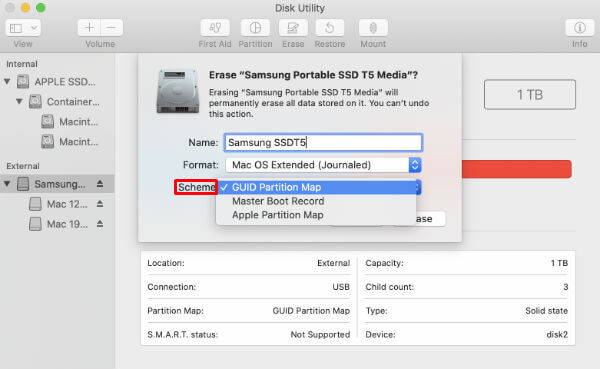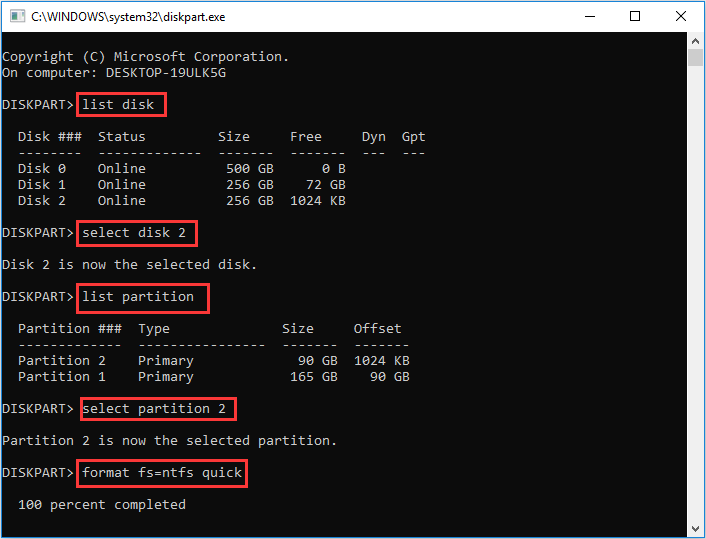
- #SSD FORMAT UTILITY MAC HOW TO#
- #SSD FORMAT UTILITY MAC MAC OS X#
- #SSD FORMAT UTILITY MAC MAC OS#
- #SSD FORMAT UTILITY MAC INSTALL#
- #SSD FORMAT UTILITY MAC PORTABLE#
#SSD FORMAT UTILITY MAC MAC OS#
Mac OS High Sierra users need to follow step 3 to show an actual drive. You are all set and can start using your VectoTech Rapid immediatelyĬommon misunderstanding is trying to format “Rapid” partition and not the drive itself “VectoTech Media”, this is when drive will appear as “disk2s1” or similar. Keep “Format: OS X Extended (Journaled)” and “Scheme: GUID Partition Map” as it is
:max_bytes(150000):strip_icc()/RecoveryUtility-56a5d55d5f9b58b7d0dea1f1.jpg)
Click on the USB drive in the sidebar in Disk Utility. Go to Applications>Utilities and launch Disk Utility. 1 Leap and BSD v10 as used in Freenas Coral cant vouch for BSD v9 - it works for the latest version before v10 My M/B is an old Asrock so the main issue I have with this card could be related to this. To format a USB drive in FAT32 or exFAT: 1. Marvell RAID Utility User Guide Getting Started 1-3 1.
#SSD FORMAT UTILITY MAC MAC OS X#
Click on Erase button – in the top middle menuĦ. Change the name from “Untitled” to the name you want your Rapid SSD to show up on your computerħ. Better still, it can be read from and written to on any Mac running Mac OS X Snow Leopard or later and on Windows. Step 4: Choose a format and rename the drive as Macintosh HD in. Step 3: Select your Macs corrupted/failed internal drive (Macintosh HD or Apple SSD) from the left pane and click Erase on the top of the Disk Utility window. Step 2: Open Disk Utility from the macOS Utilities or Mac OS X Utilities window. Click on “VectoTech media” only in the left side bar (Do not click on Rapid or any other partitions)ĥ. Step 1: Boot your Mac into Recovery Mode. (For MAC OS High Sierra users only, skip this step if using other MAC OS)Ĥ. Click on “View” button in top left corner and select “Show All Devices” in a drop down menu. Some Mac users may require the ability to erase a disk or erase a hard drive from the command line on Mac OS, a task which is typically performed through the Disk Utility application from the GUI. You will be presented with a list of all the volumes including the internal hard drive and the external hard drive. To open it, go to “Finder” -> Click on “Applications” in the left side bar -> double click on “Utilities”-> Double click on “Disk Utility”ģ. If you are going to clone Mac hard drive to SSD, it is recommended to use Disk Utility.Simply open Disk Utility from the Spotlight (Command+Space) or on the Utility folder in your applications. Input new partition name, and use '+' and '-' button on the left to determine the size of the partition.2. In Disk Utility, select the SSD(not the partition under), then select Partition button on top of Disk Utility.Ħ.
#SSD FORMAT UTILITY MAC HOW TO#
You can also create multiple partitions in one SSD. Mac Secret Trick - Reformat APFS to Mac OS Extended with Disk Utility Recovery Mode Hard DriveCheck out my other video How to Clone Mac Hard Drive with Dis. After you click Erase, the erase will start and the partition you created will appear under the drive on left side of Disk Utility.ĥ. Place a checkmark next to 'Perform a quick format'. What the heck should I do since Mac is not helping (Samsung drive) an. But afterward, I tried to find APFS on the selection and the GUID Partition is not to be found.

#SSD FORMAT UTILITY MAC PORTABLE#
Select the file system and set the cluster size. I have the Samsung portable SSD T7 external (512G) and I was able to format it to Mac OS Journaled with no problem using Disk Utility. Choose the SSD partition you want to format. At the start, search for 'Disk Management' and press 'Enter'. Please choose GUID Partition Map as Scheme. You can format SSD with this built-in tool with simple steps: Step 1. Otherwise you can choose either OS X Extended or ExFAT as format.

#SSD FORMAT UTILITY MAC INSTALL#
Input your desired name of the partition, if you plan to install Mac OS onto the partition,choose OS X Extended(Journaled) as format. Select the SSD and then select Erase button on top of disk utilityĤ. Disk Utility will pop up, if not, open Disk Utility and you shall see the SSD listed under Externalģ. Release both the keys when you see your Mac starting with white Apple Logo. Turn on the Mac and immediately press and hold Command + R keys on the keyboard of your computer. Here Ill show you how you can erase and format a disk using the command line. To do that, the only thing you need is a bit of precise syntax to make sure that you are erasing the proper disk. But some Mac users might need to erase them from the command line on Mac OS. Connect your SanDisk® SSD to your Apple Mac system via USB adaptor, the Mac OS will pop up a message: 'The disk you inserted was not readable by this computer', please select InitializeĢ. Format New SSD Drive Using Disk Utility If you have replaced the Hard Drive on Mac with a New SSD Drive, you need to format the disk to APFS format. Most users use Disk Utility to erase a disk or hard drive. Procedure may be different with other OS versions.ġ. This guide uses Mac OS X El Capitan Version 10.11.5.


 0 kommentar(er)
0 kommentar(er)
